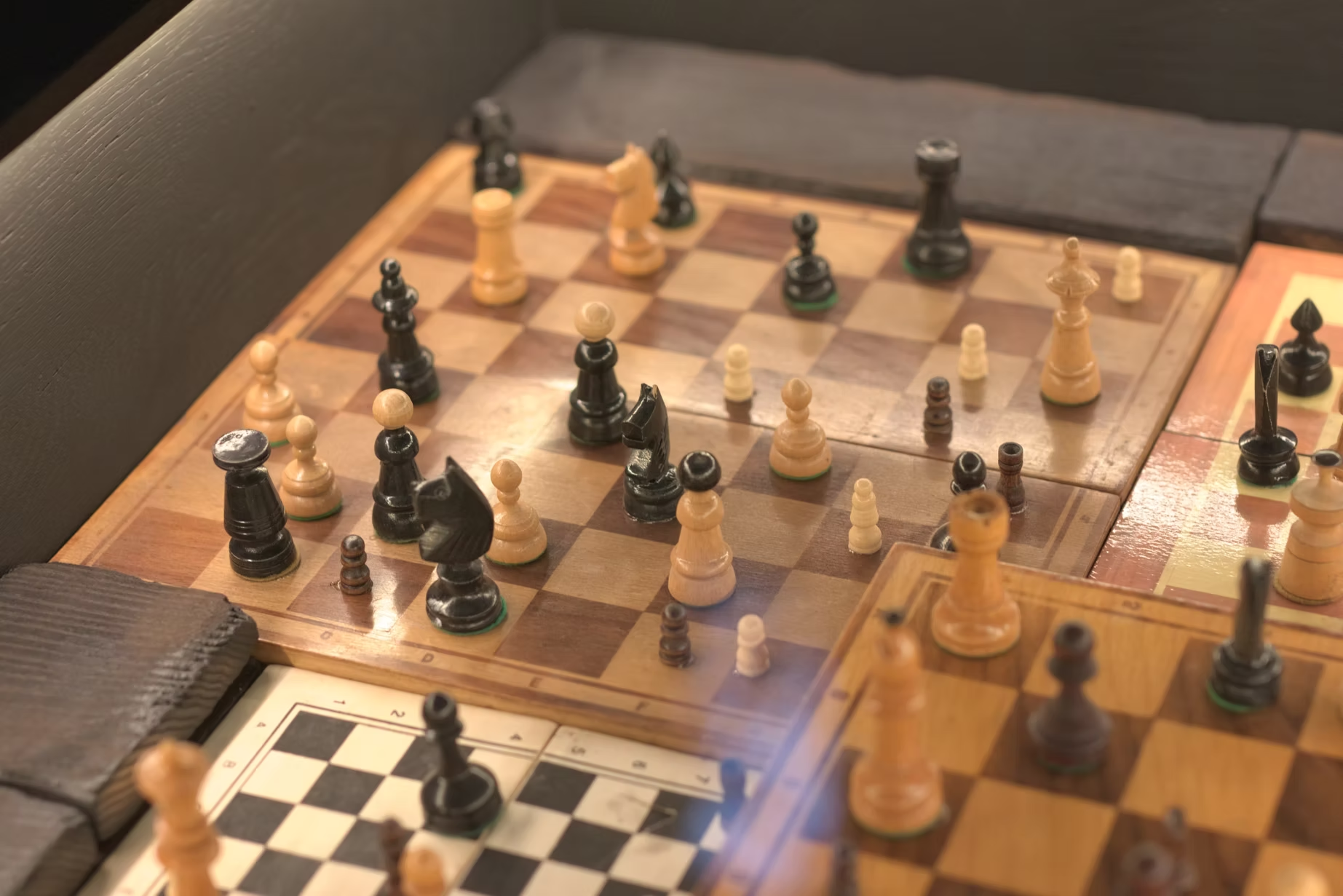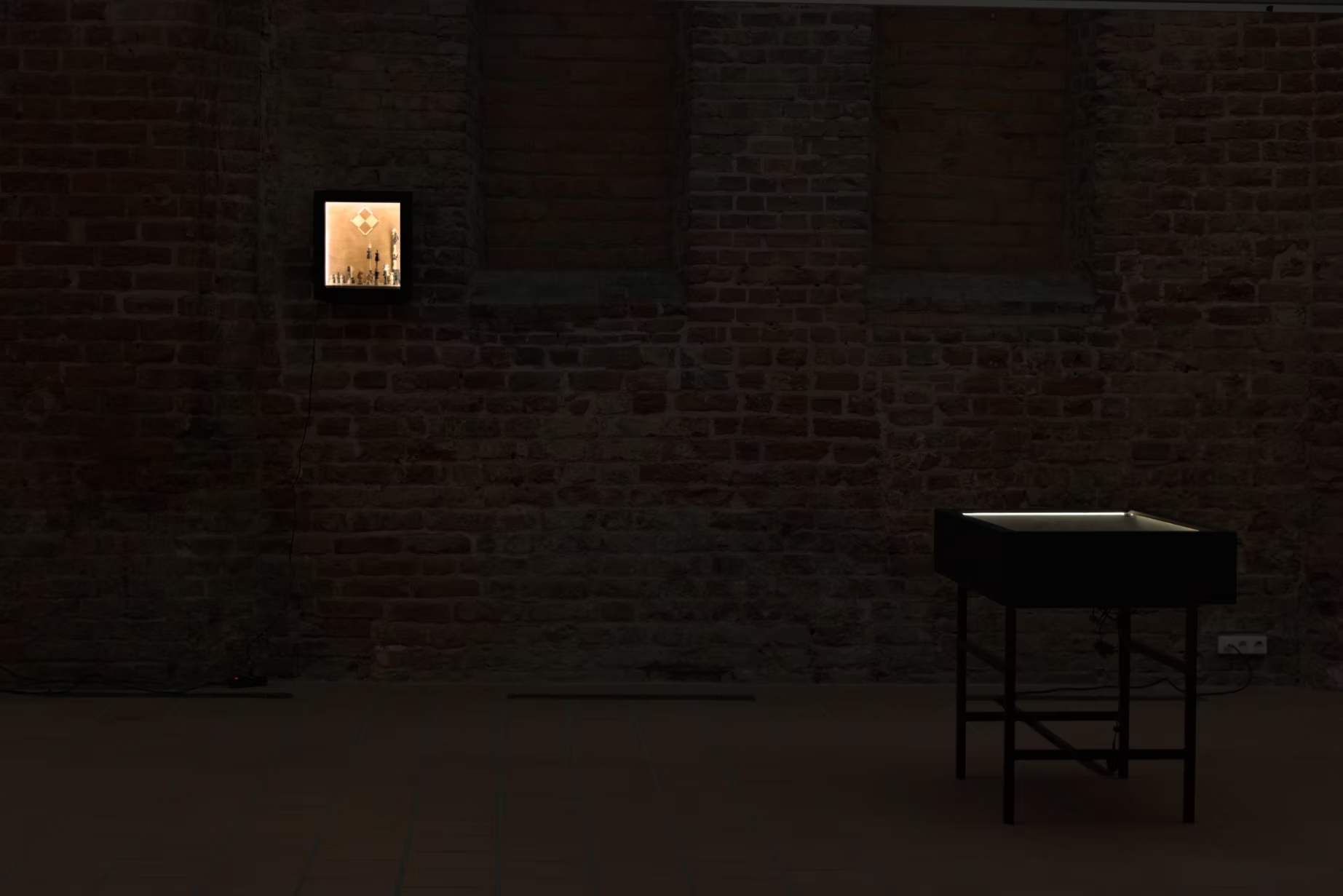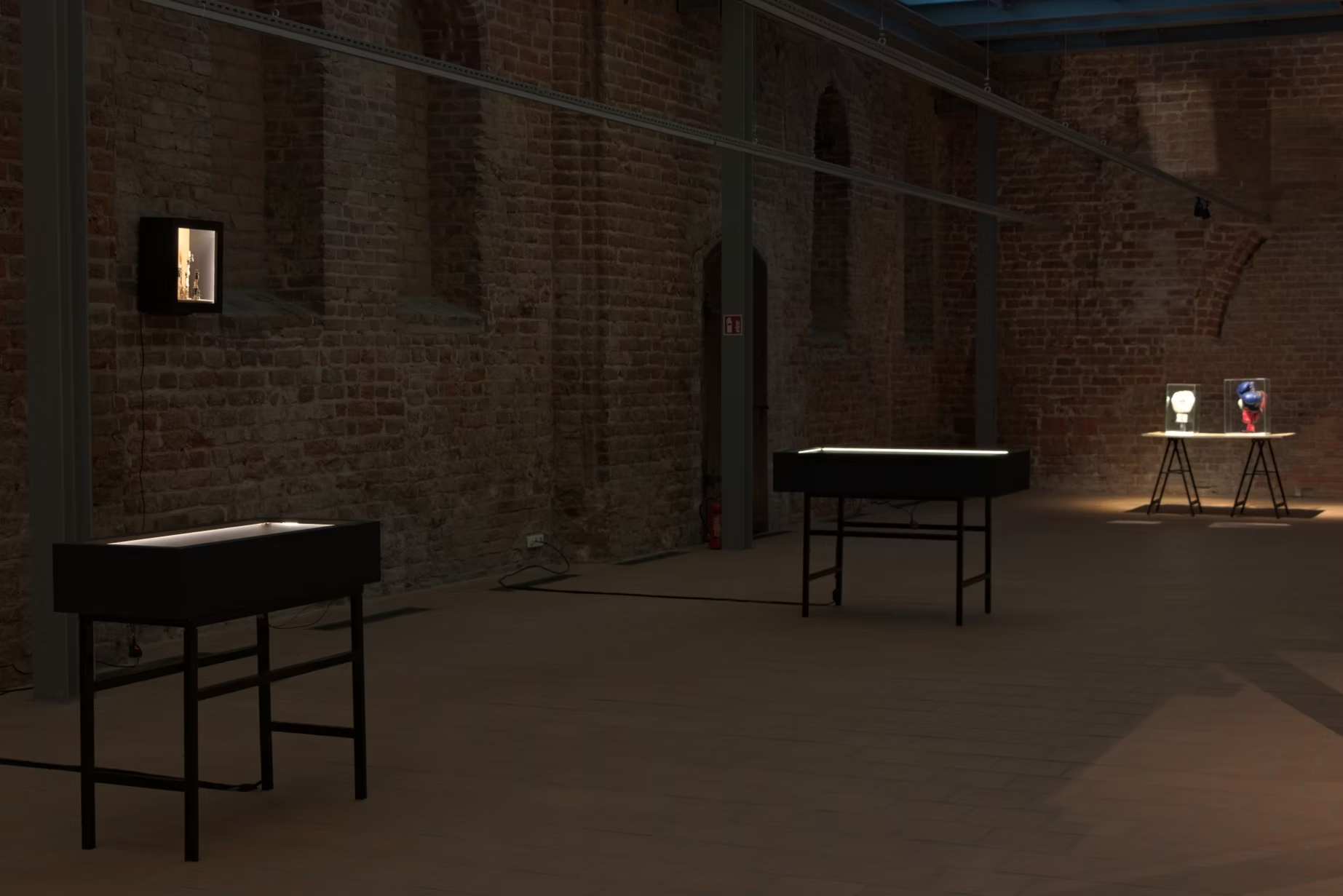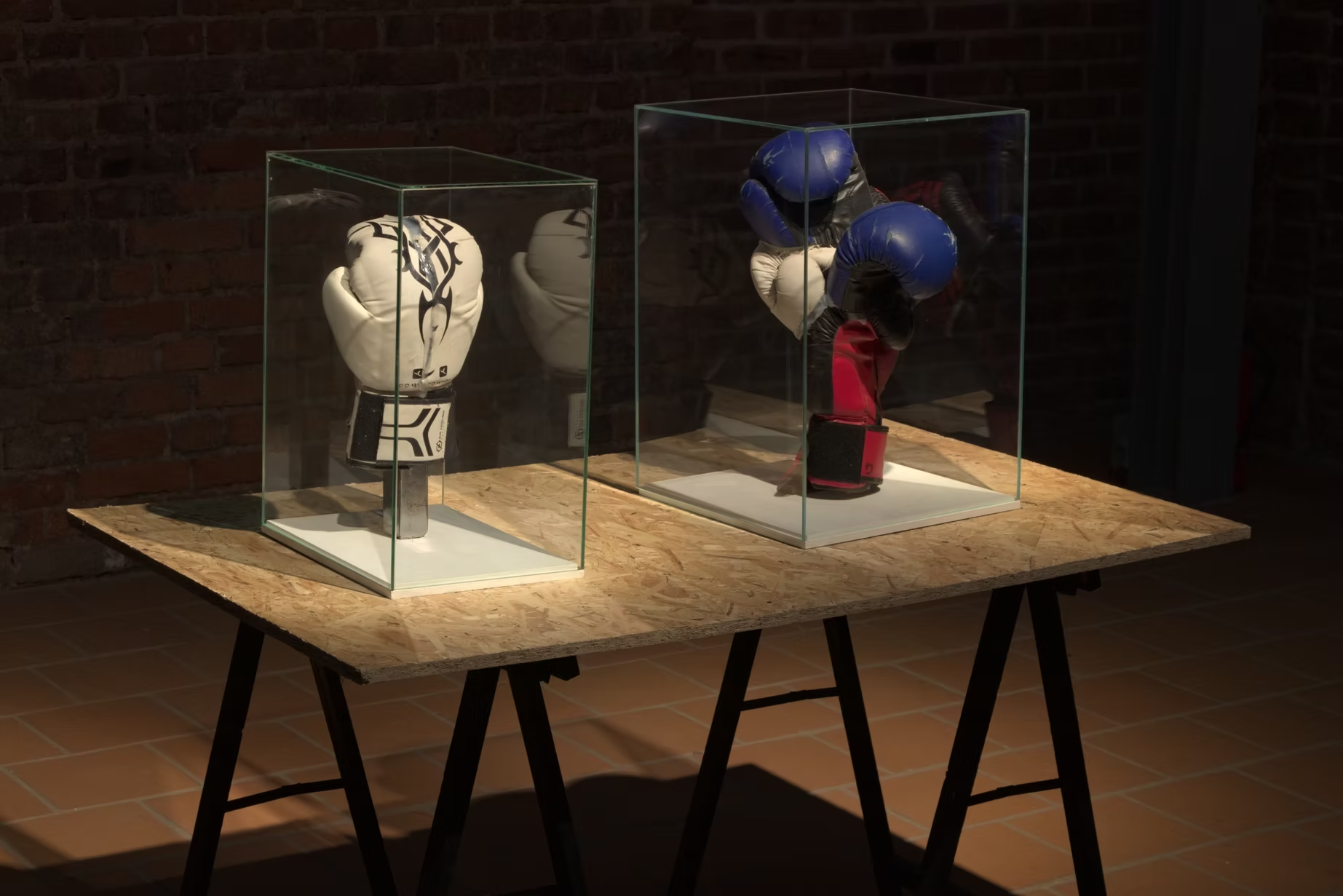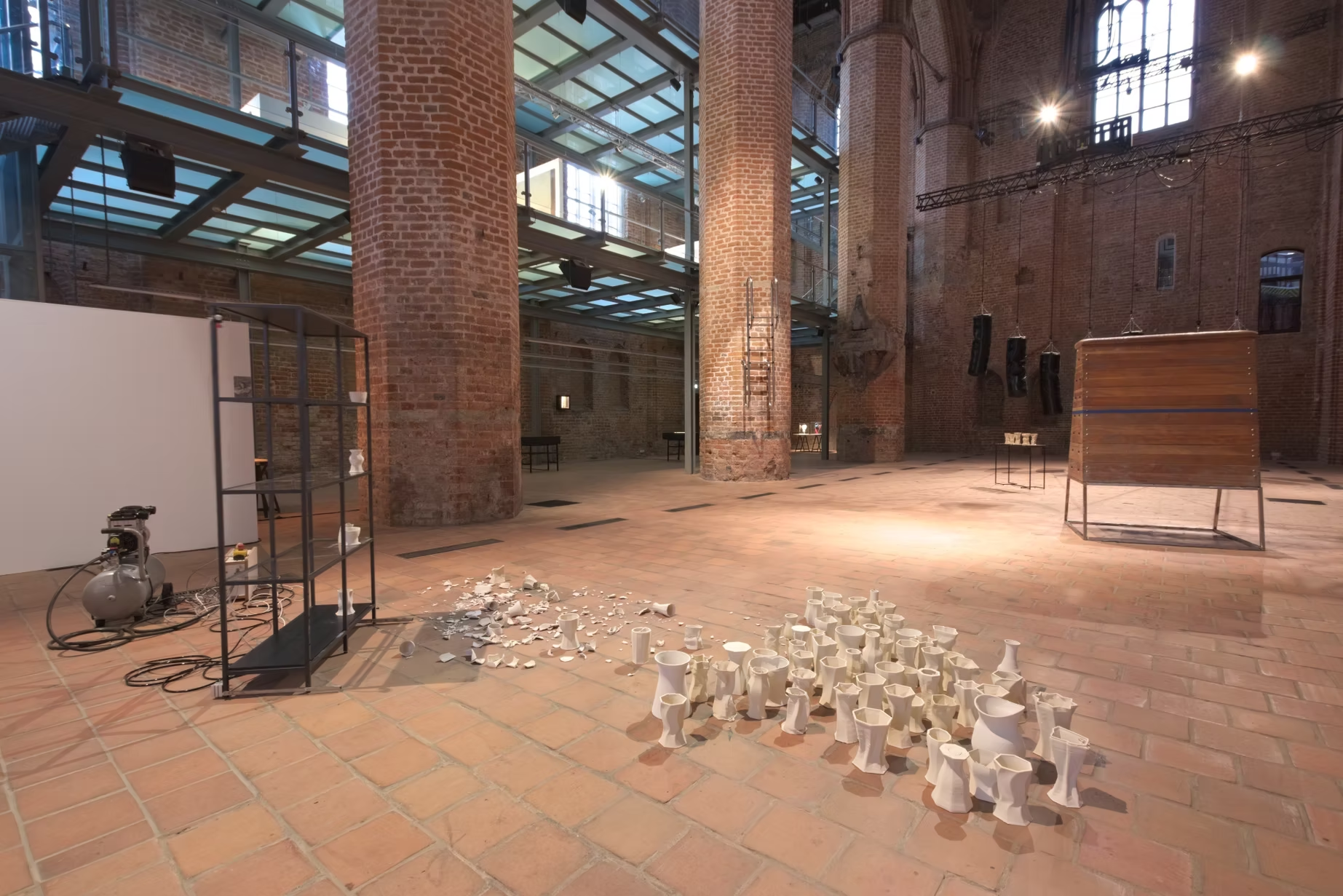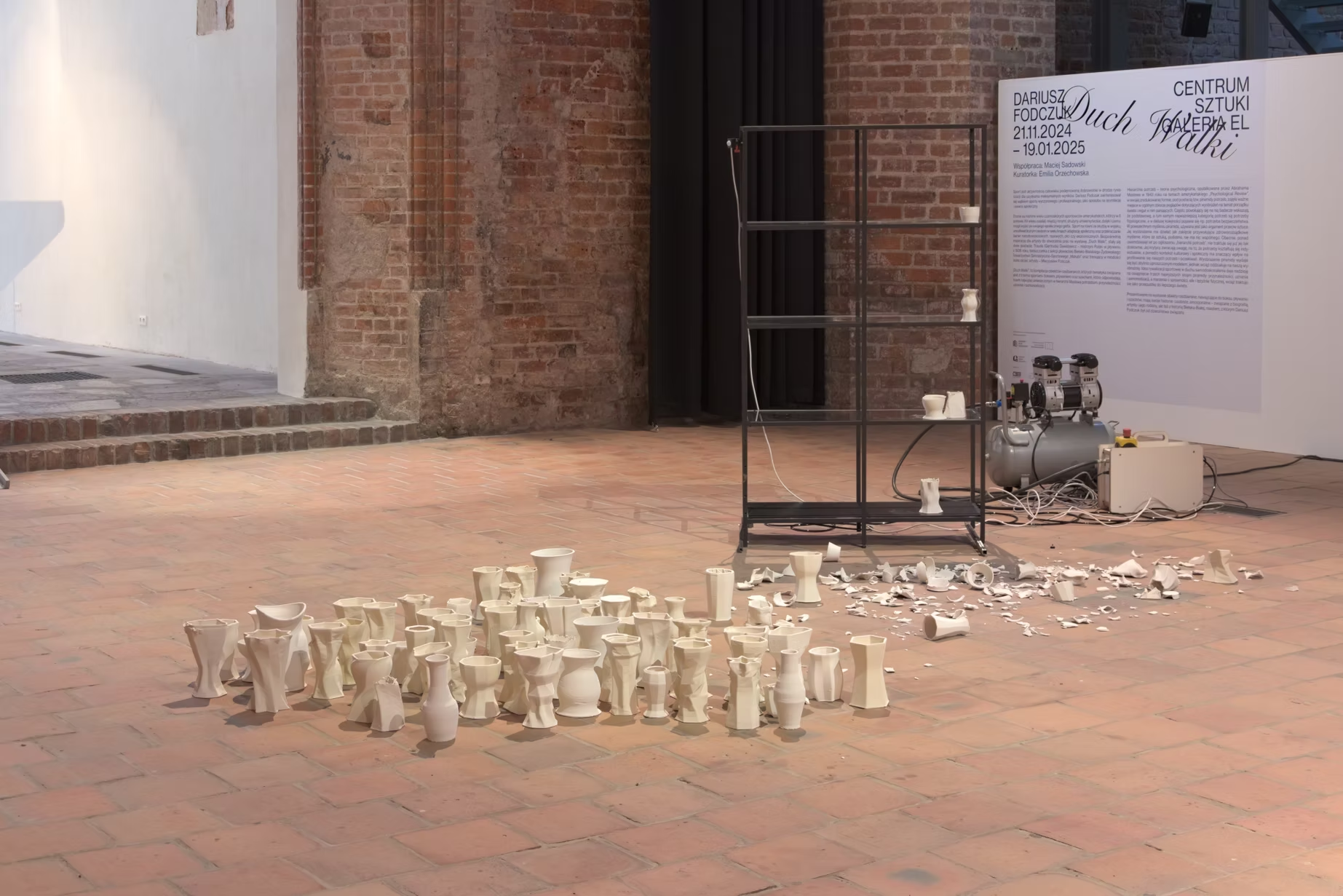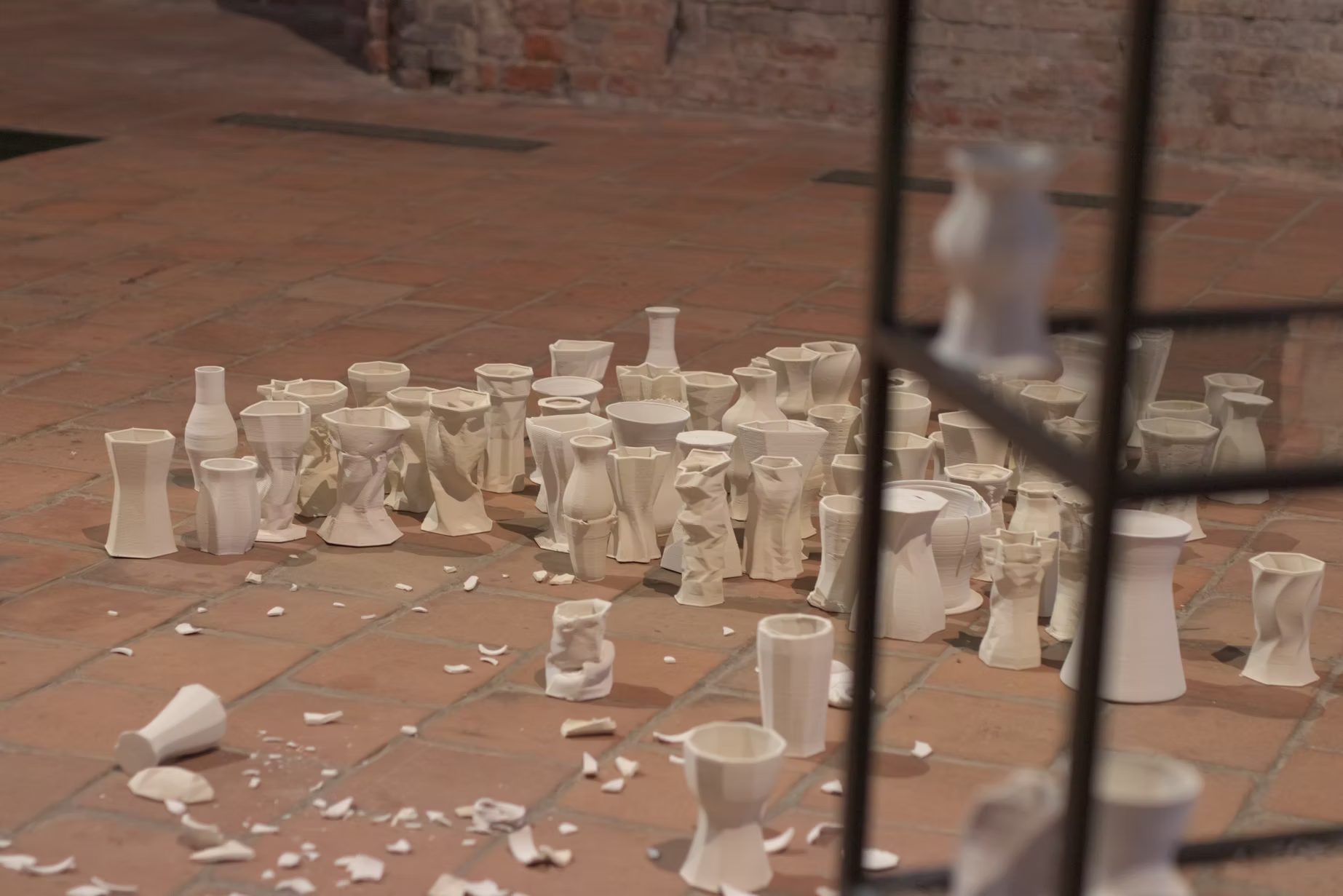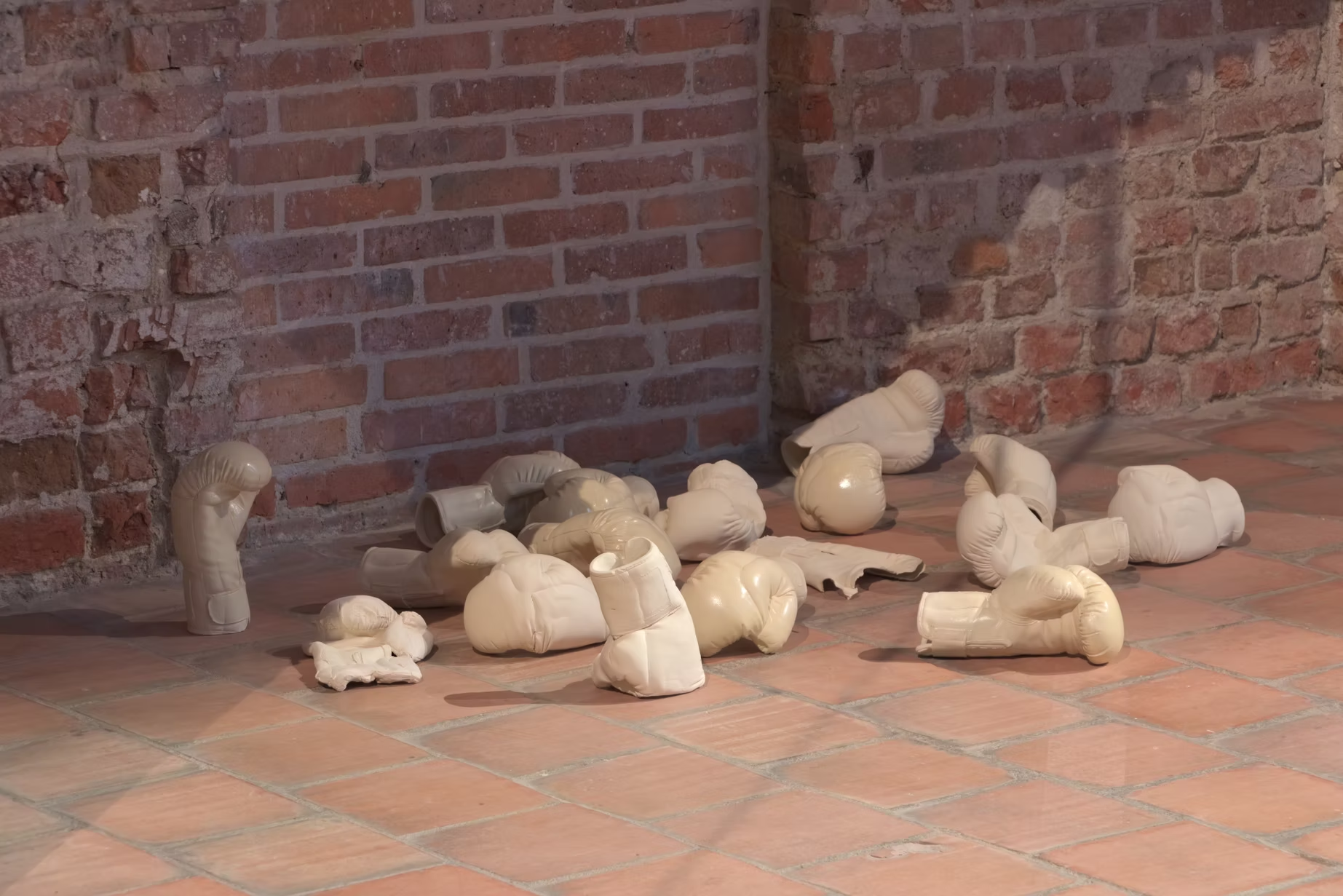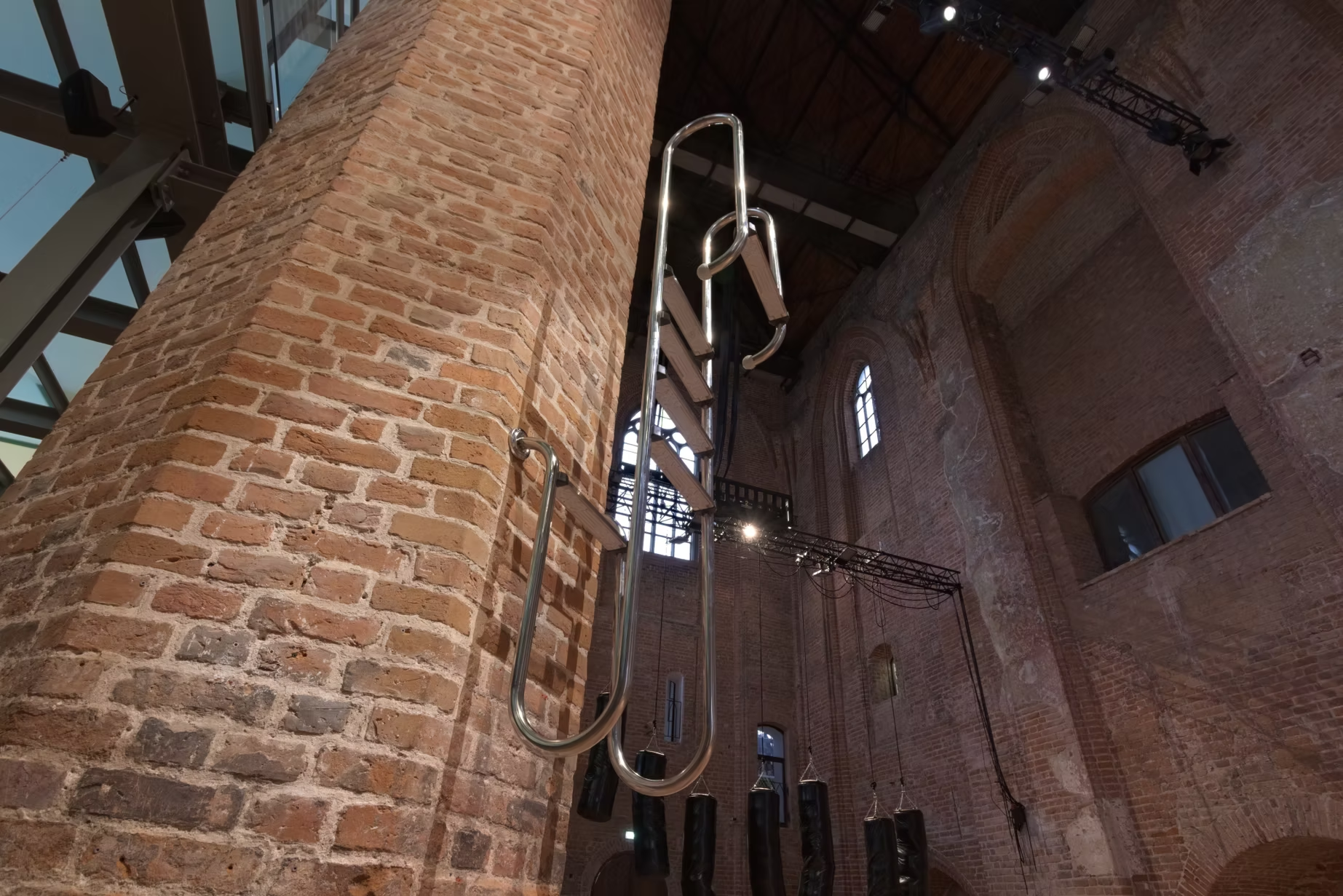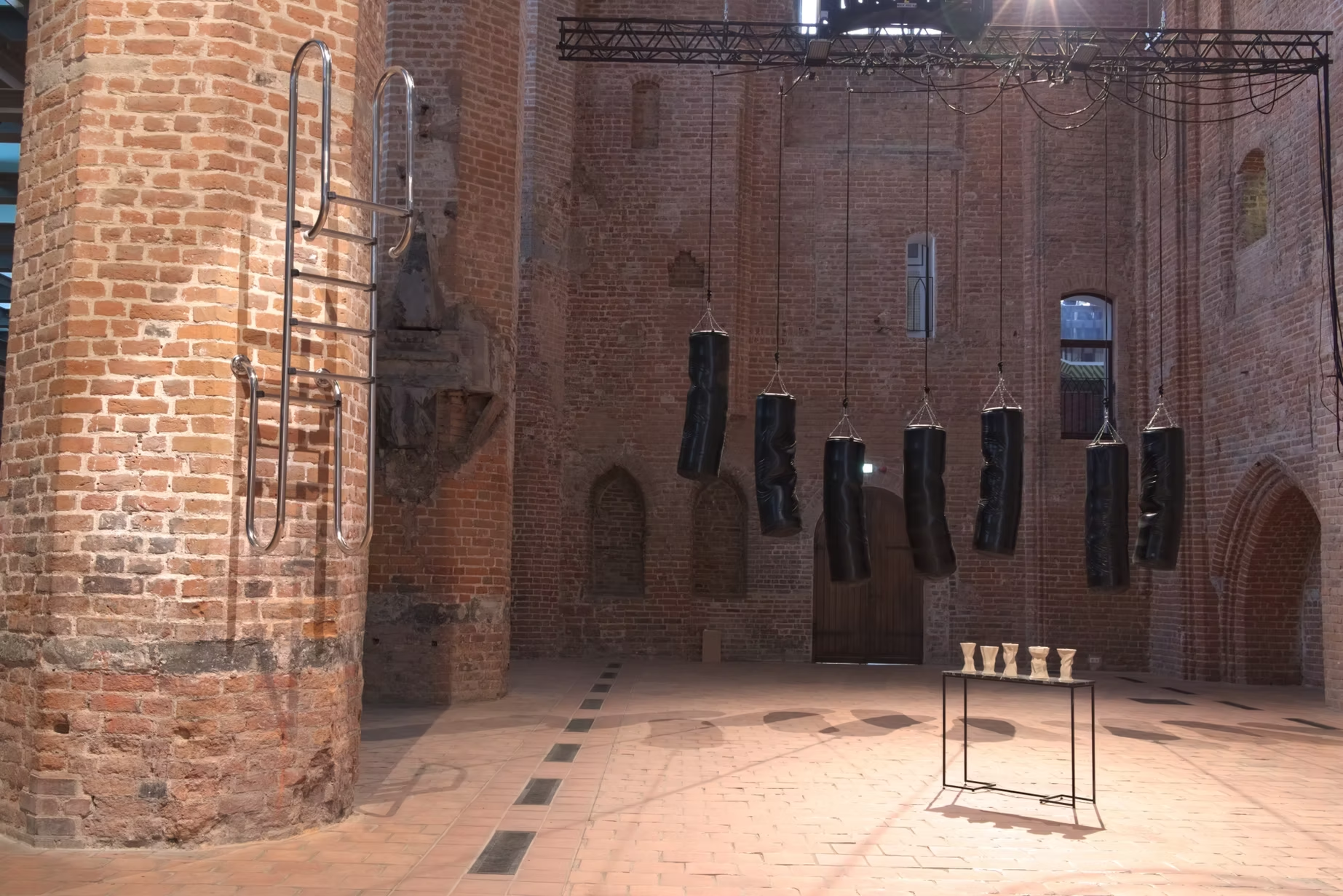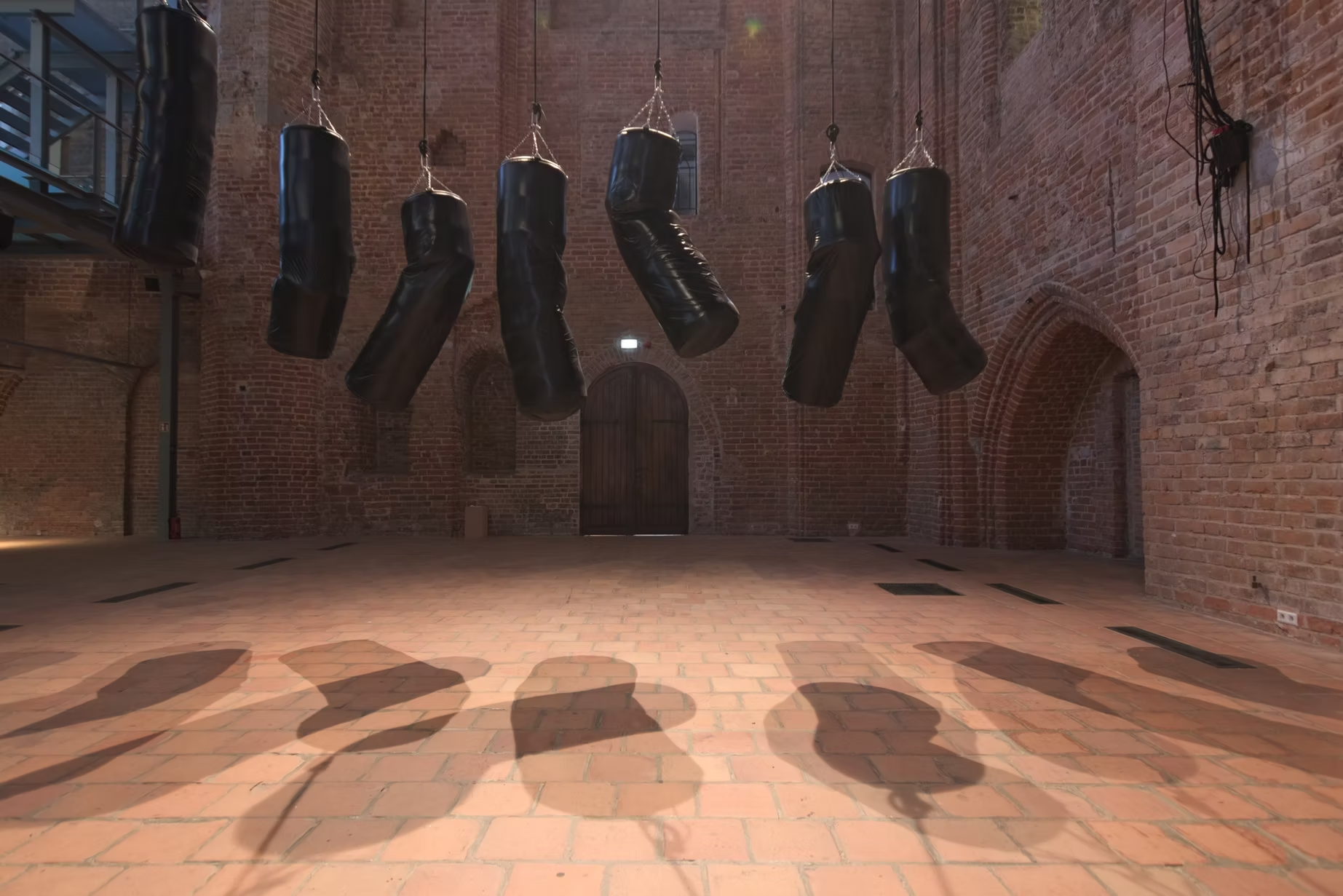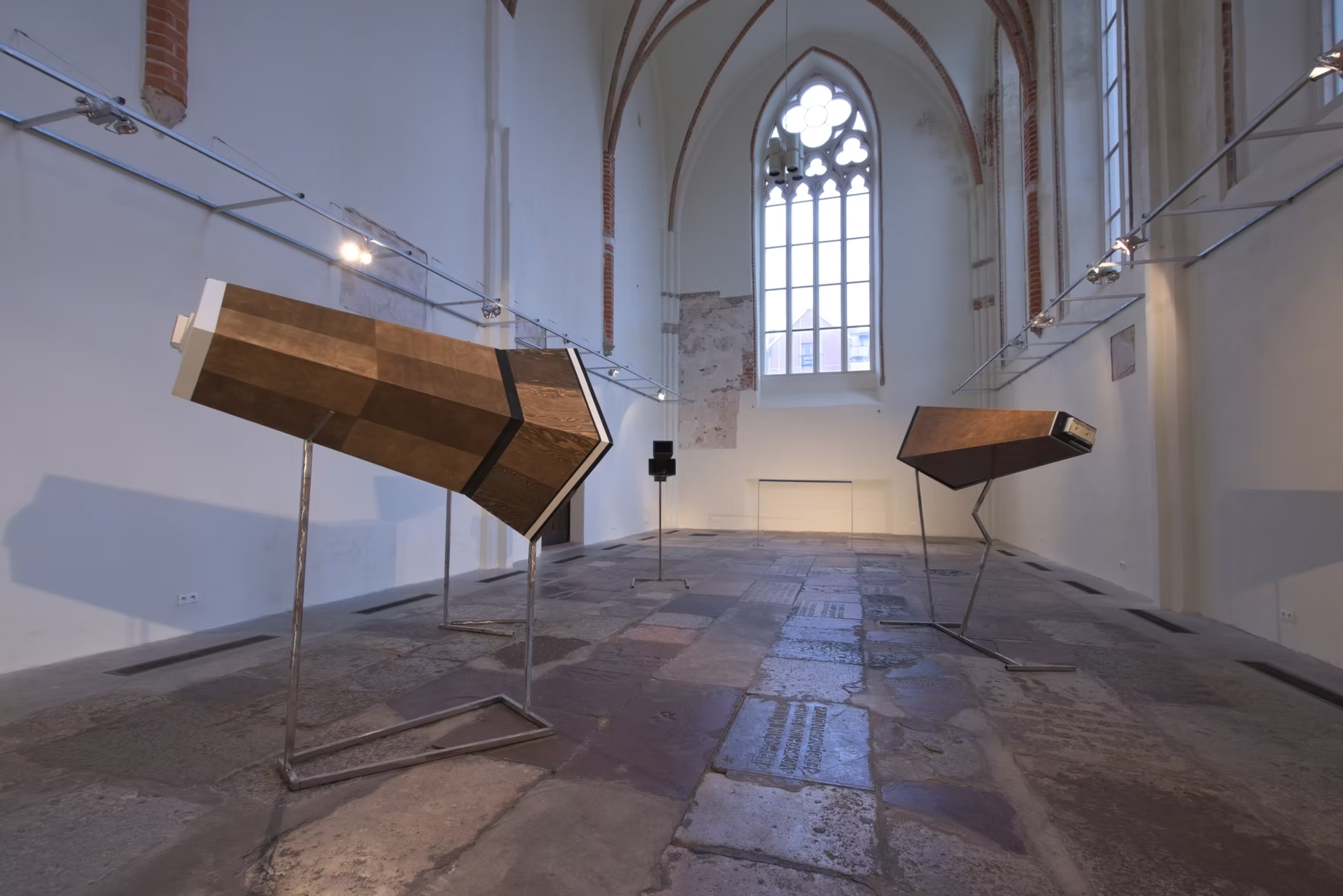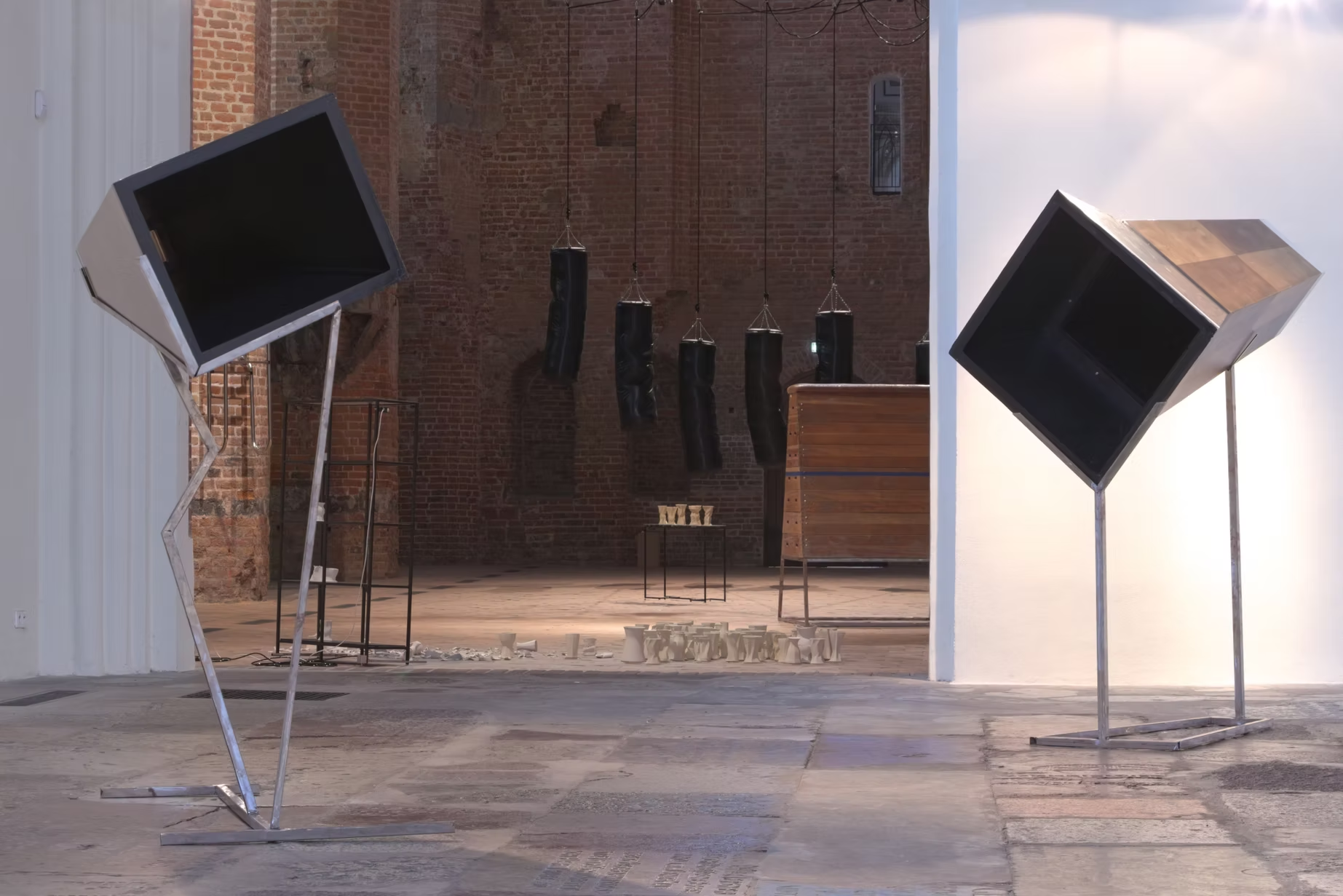The Fighting Spirit is a compilation of sculptural objects thematically linked to three sports: boxing, swimming, and chess, which correspond to the three highest-ranked needs in Maslow’s hierarchy: belonging, esteem, and self-actualization. The hierarchy of needs is a psychological theory published by Abraham Maslow in 1943 in the American journal Psychological Review. In its simplified form, known as the pyramid of needs, it has become a widely accepted model for understanding the structure of human motivation. Researchers often cite it to argue that physiological needs are the most fundamental, followed by safety needs, among others. In common discourse, the pyramid is sometimes used as an argument against art, suggesting that artistic pursuits are non-essential. The pyramid’s imagery serves as a kind of spell invoking rational thinking, supposedly disconnected from art. However, more than eighty years after Maslow introduced his theory, it is no longer taken so literally. Critics argue that needs develop individually and are significantly influenced by cultural and social contexts, shaping our desires, aspirations, and expectations. The popular perception of the pyramid appears to be an oversimplified model—one that Maslow himself never actually used to illustrate his concept—yet it continues to shape our imagination. Similarly, the “field of art” is often perceived as an elite domain, accessible and attainable only to a select few, where the needs of belonging, esteem, and self-actualization form the foundation of artistic existence. In reference to the universal experiences of struggle, frustration, and perseverance, we symbolically mark a blue line at a height of 130 centimeters in the space of Galerie EL. This gesture echoes one of the most conceptual yet romantic acts performed in 1968 by Edward Krasiński. His infinite blue line, made of adhesive tape with no beginning or end, became his artistic signature, expanding the boundaries of the “field of art” to infinity. In The Fighting Spirit exhibition, this line sets the level from which we can “dive into” Dariusz Fodczuk’s latest artistic explorations. Share on THE FIGHTING SPIRIT VOL. 2
EL Gallery Art Center, Elbląg, 2024
Sport is a voluntary human activity undertaken in competition to achieve maximum results. Dariusz Fodczuk became interested in the theme of professional and elite sports as a means of social assimilation and upward mobility.
There are many well-known stories of African American athletes who, in the second half of the 20th century, joined university teams, enabling them to break free from their social ghettos. In many countries, sports, like military service, have facilitated social adaptation and the overcoming of national, racial, gender, and economic barriers. The direct inspiration for the works in The Fighting Spirit exhibition came from two figures: Trauda (Gertrude) Dawidowicz – the 1936 Polish swimming champion from Bielsko, representing the swimming section of the Bielsko-Biała Jewish Gymnastics and Sports Association “Maccabi” – and the artist’s father, Mieczysław Fodczuk, who trained professionally in boxing in his youth.
The idea of sports competition as a form of self-improvement offers hope for achieving the three highest levels of needs: belonging, esteem, and self-actualization. Dreams of strength, endurance, and physical fitness are still seen as a gateway to a better world—a world theoretically open to all, as we navigate the challenges and obstacles on our personal “battlefields.”
This website uses cookies to improve your web experience.



